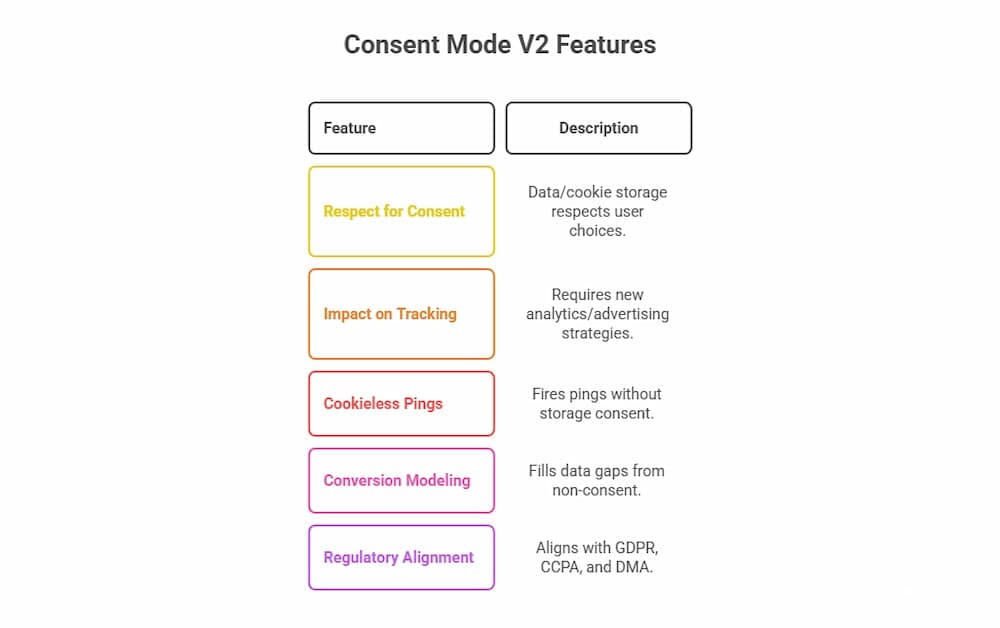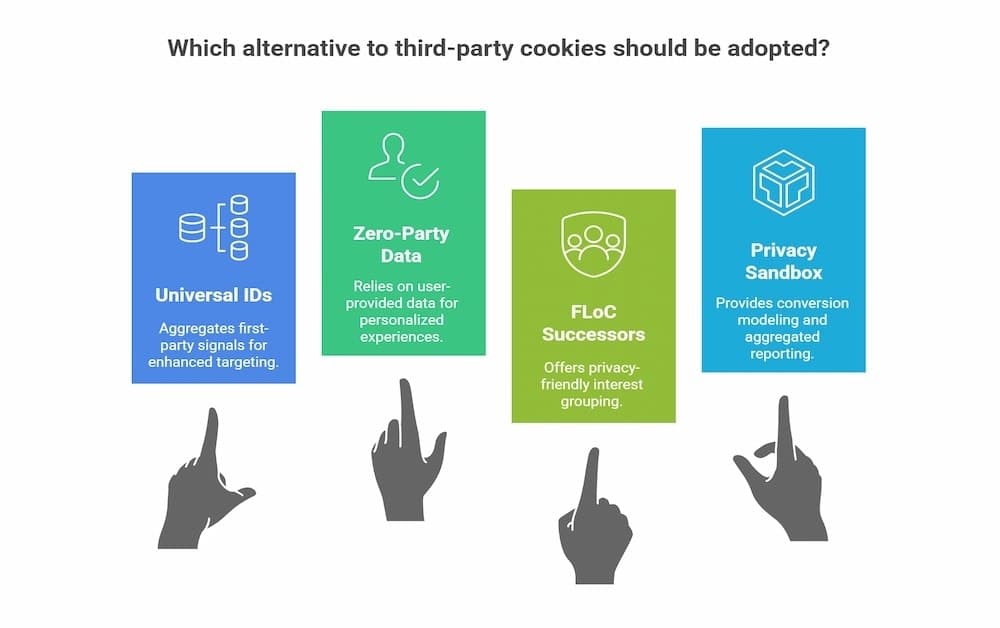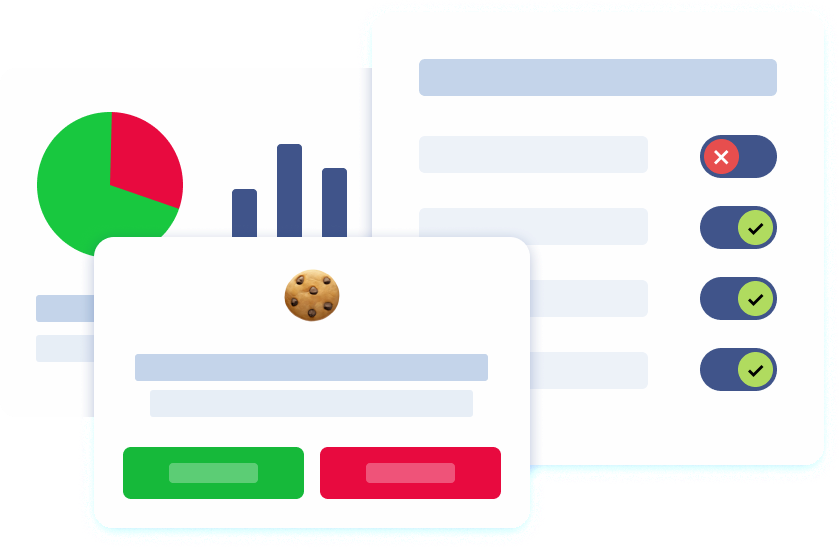Introduction
Google Consent Mode V2—launched in late 2023 and enforced across regions like the EEA in March 2024—redefines how digital marketing operates under modern privacy laws like GDPR and CCPA, as well as broader data privacy regulations. It requires explicit user consent via a consent management platform (CMP) before enabling first-party data collection, Google Ads conversion tracking, or Google Analytics, making it essential to collect valid consent for compliance. These changes are significantly impacting the online advertising industry and the landscape of online advertising as a whole. Privacy concerns have driven the evolution of consent and tracking, pushing organizations to adopt more privacy-centric solutions. The update introduces nuanced consent signals—ad_user_data and ad_personalization—alongside existing flags like ad_storage and analytics_storage.
This overhaul aligns with Google’s Privacy Sandbox initiative and evolving Digital Markets Act requirements, placing user privacy at the forefront while preserving targeted advertising and data collection capabilities.
Understanding Consent Management
At the heart of Consent Mode V2 lies the Consent Management Platform, a critical layer that ensures valid consent is obtained before any third‑party cookie or tracking pixel fires. Google mandates the use of a Google‑certified CMP, often integrated with IAB TCF 2.2, to manage consent signals.
CMPs enable:
- Explicit consent collection via banners before cookie deployment.
- Signaling user preferences—like ad_personalization and ad_user_data—to Google Tags or Google Tag Manager.
- Managing consent signals for other platforms, not just Google, to ensure compliance and privacy across multiple advertising and analytics solutions.
- Adapting to jurisdictional regulations: GDPR, CCPA, DMA, etc.
- Respecting user privacy while enabling first-party data strategy.
Well-implemented CMPs foster user trust, ensure compliance, and improve modeling accuracy by ensuring that the right signals are correctly communicated and honored.
Regulatory Compliance
The evolving landscape of data privacy laws has made regulatory compliance a top priority for the digital advertising industry. With the deprecation of third-party cookies and the introduction of Google Consent Mode V2, advertisers face new challenges—and opportunities—in managing user consent and data collection. Regulations like the General Data Protection Regulation (GDPR) and the California Consumer Privacy Act (CCPA) require explicit user consent before any personal data is collected or processed, fundamentally changing how digital marketing operates.
Google Consent Mode V2 is designed to help advertisers navigate these complex requirements. By integrating a Google-certified consent management platform (CMP), businesses can manage user consent signals across multiple websites, ensuring that data collection only occurs when users have provided explicit consent. This approach not only respects user privacy but also aligns with the latest data protection standards, including the Digital Markets Act (DMA).
Transparency is at the heart of regulatory compliance. Advertisers must clearly communicate how data is collected, used, and stored, giving users more control over their personal information. Tools like Google Tag Manager and Google Consent Mode V2 make it possible to manage user consent efficiently, ensuring that Google tags behave based on user preferences and that only valid consent triggers data collection for Google Ads, Google Analytics, and other Google services.
The shift to first-party data collection and zero-party data—information users intentionally share—enables advertisers to deliver personalized experiences while staying compliant. By replacing third-party cookies with privacy-centric solutions, brands can continue tracking user behavior and measuring campaign effectiveness without compromising user privacy or violating data privacy laws.
Regulatory compliance is not a one-time task but an ongoing process. The ad tech industry stands to benefit from continuous innovation, developing new methods for tracking user behavior, managing user consent, and respecting user preferences. By staying up-to-date with evolving privacy laws and leveraging tools like Consent Mode V2, advertisers can build trust, enhance user privacy, and ensure their digital advertising strategies remain both effective and lawful.
Ultimately, prioritizing explicit consent, transparency, and user-centric data practices is essential for navigating the future of digital advertising. By embracing consent management, respecting user privacy, and adapting to new regulations, the industry can create a more sustainable and trustworthy digital ecosystem for all stakeholders.

Impact on Data Protection and Privacy
The move to deprecate third‑party cookies across major browsers, championed by Google’s initiatives, signals a shift to first‑party data and privacy-centric tracking frameworks. This trend, known as third-party cookie deprecation and third-party cookie blocking, is reshaping the digital landscape. Traditional third‑party tracking cookies are increasingly ineffective due to browser blocks and policy shifts, as web browsers now block third-party cookies by default, making it difficult to retain third-party cookies for cross-site tracking. These policy shifts reflect the evolving privacy features of web browsers. In addition to cookies, third-party trackers and other tracking technologies are also being impacted by these changes, requiring new approaches to data collection and advertising.
Consent Mode V2 plugs in here, enabling:
- Respect for user consent before any data or cookie is stored.
- These changes significantly impact the ability to track users and track users across sites, requiring new strategies for analytics and advertising.
- Firing of cookieless pings when using advanced mode, even without storage consent.
- Use of conversion modeling to fill in data gaps caused by non-consent.
- Alignment with broader efforts like GDPR, CCPA, and DMA.
By revamping how user behavior, browsing history, and tracking user activity are handled through consent tracking, Consent Mode V2 ensures data privacy while allowing businesses to maintain insight into user behaviors and web browsing analytics, supporting ad performance in a changing environment.
First-Party Data Strategy
In a world without third-party cookies, companies need to optimize first-party data collection—information directly sourced from their users. Consent Mode V2 supports this by:
- Ensuring first-party data is enriched via personalized ads and analytics tied to user consent, while using minimal data to preserve privacy.
- Acting as a bridge to Google’s analytics tools with accurate consent signals, leveraging zero-party data where users intentionally share preferences, and leveraging aggregated data to understand user behavior while respecting privacy.
- Enhancing first-party data strategy through techniques like email capture, surveys, gated content, contextual targeting based on user interests and data from the user’s device, and server-side analytics.
Ultimately, first-party data becomes indispensable—not just for targeted advertising, but as a foundation for trust and user privacy. Unlike third-party cookies, these approaches focus on privacy and consent.
Ad Targeting and Blocking Third-Party Cookies
As the era of third-party tracking cookies comes to a close, the ad-tech sector is evolving. There is now a need to replace third-party cookies with privacy-enhancing technologies, such as Google’s Privacy Sandbox APIs and alternative identifiers, to address privacy concerns while maintaining advertising effectiveness. Brands are experimenting with:
- Contextual advertising, based on page content rather than user identity.
- First-party data targeting, respecting consent, and using user-provided information.
- Google Consent Mode V2, which allows:
- Basic mode: tags are blocked until consent is granted.
- Advanced mode: tags fire, but pings remain anonymous until consent is granted.
- Basic mode: tags are blocked until consent is granted.
- Advanced mode: tags fire, but pings remain anonymous until consent is granted.
- For those interested in alternatives, Microsoft Consent Mode provides similar consent management capabilities for Microsoft Ads via Universal Event Tracking (UET).
According to PPC professionals, failing to implement V2 can see Google Ads performance collapse, such as Performance Max campaigns stalling when ad_personalization isn’t set.
Brands can still maintain ad targeting, comply with privacy laws, and reduce reliance on third-party data in a way that respects user preferences.

Alternatives to Third-Party Cookies
With third-party cookies phased out, marketers are turning to next-gen solutions:
- Universal IDs and identity graphs, aggregating first-party signals.
- Zero-party data, which users willingly provide (e.g., preferences, forms).
- FLoC successors like Protected Audience Protocol, privacy-friendly interest grouping.
- Google’s Privacy Sandbox initiatives, including conversion modeling and aggregated reporting.
Consent Mode V2 is critical in this ecosystem, ensuring that user tracking only proceeds with explicit user consent, distinguishing it from controversial third-party tracking.
Navigating the Cookieless Future
The transition to cookieless media introduces key strategic shifts:
- Prioritize user privacy via consent banners, Google Tags, and CMPs.
- Leverage Consent Mode V2 in advanced mode for modeling while respecting preferences.
- Build robust first-party data strategies: using email, site login, preference forms, and CRM integration.
- Explore privacy-friendly targeting, including contextual ads and cohort-based groupings via Privacy Sandbox.
- Stay compliant with GDPR, CCPA, DMA, and other data protection laws—and monitor browser policies and tracking blockers regularly.
This approach ensures that businesses are equipped to run digital advertising and track user behavior effectively, ethically, and legally.
Conclusion
One year since Google announced Consent Mode V2 and enforcement began in March 2024, the digital advertising and ad tech industry have adapted from relying on third-party cookies to embracing first-party data, consent signaling, and privacy-centric modeling.
Key learnings include:
- CMPs are mission-critical for obtaining explicit consent and signaling preferences like ad_user_data and ad_personalization.
- Advanced consent mode enables valuable modeling, helping preserve conversion tracking even with high opt‑outs.
- First-party data and zero-party data are now central to targeted advertising in a cookieless landscape.
- Regulatory alignment, including GDPR, CCPA, and DMA, as well as browser initiatives like Privacy Sandbox, drives this evolution.
Modern marketers must embrace Consent Mode V2, implement Google-certified CMPs, and invest in privacy-first strategies. This enables effective ad targeting, compliance with privacy laws, and long-term sustainability in a cookieless future, balancing user privacy with business needs.



